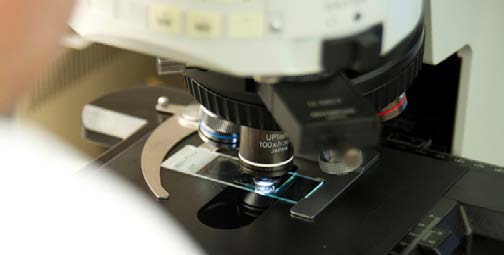Malaria and Parasitic Disease Control in the United States
Preventing and Treating Malaria and Parasitic Diseases

A CDC scientist examines a slide via microscopy to identify parasites.
The expertise CDC brings to its global work in malaria and parasitic diseases is also critically important to protecting the United States. CDC’s parasitic diseases diagnostic reference laboratory provides consultations to clinicians or public health laboratories in the United States and around the world, often for the most difficult to diagnose cases.
In 2018, across the United States and globally, CDC conducted over 6,400 diagnostic tests for parasitic diseases. CDC also responded to over 5,100 hotline inquiries, providing advice on diagnosis and treatment to health care providers, blood banks, and other essential health care facilities, as well as advice on preventing malaria among travelers. This service is essential to improve prevention, diagnosis, and treatment of parasitic diseases in the United States. CDC also managed the release of otherwise unavailable life-saving medications for 97 patients with parasitic infections in the United States.
Controlling Cyclosporiasis in the United States

Cyclosporiasis has been the cause of multiple food-related outbreaks in the United States, with over 2,300 confirmed cases reported from 33 states between May and August 2018. To improve control efforts, tools to identify parasites that are related (and may have come from the same source) are needed. CDC staff have developed a method for genotyping these complex organisms that appears to accurately identify parasite linkages and may be useful to identify and investigate outbreaks. As no validated molecular typing tools have previously been available, this new typing method could help reduce the spread of parasitic diseases such as cyclosporiasis by stopping them at their source.